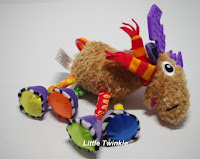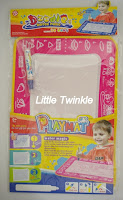
- The critical development years happen from infancy and into the toddler years.
- The bones in a baby’s foot are made of cartilage, the same flexible substance you find in your ears and nose.
- A shoe that is too rigid or too tight can change the shape of your child’s foot.
- Around 70% of foot problems come from wearing the wrong footwear or ill-fitting shoes.
- A child’s feet develop until he or she is about 18 years old.
- A child’s feet grow in spurts and often require new shoes every 3 to 4 months.




When your child first begins to walk, providing proper foot protection while enabling maximum movement is important for his or her foot development. Allowing your youngster to go barefoot or wear soft sole shoes while inside helps the feet to grow normally and to develop musculature, strength, and the grasping action of the toes.
When walking outside or on rough surfaces, an infant’s feet should always be protected in lightweight, flexible footwear made of natural materials. Soft sole footwear is the next best thing to bare feet and provides the protection and flexibility for both indoor and outdoor walking.

The ideal shoe is soft and flexible and a fully adjustable fastening for a snug fit. Shoes should have a smooth bottom, causing less friction so that the shoe will not grab the floor and possibly cause your child to fall. Shoes that are too sticky tend to change children’s stride or gait, as they have to lift their feet to move about.
Children’s feet sweat quite a bit, so avoid buying synthetic shoes, as they will not allow your child’s feet to breathe. Synthetic materials also tend not to stretch, and the resulting pressure could damage a child’s growing foot.

Select shoes with a rounded toe box that give plenty of room for toes to move. Shoes should be made of a breathable material, like leather, cloth or canvas. Avoid man made materials, such as plastic, because they can cause odor or even bacteria growth. Soft leather or rubber soles are recommended because they allow a child’s gait and stride to develop naturally.
New shoes should never need to be “broken in.” It means either they were not properly designed or not properly fitted for your child’s foot.

It is not recommended for children to wear hand-me-down shoes. Most shoes form to the foot, so wearing hand-me-downs that have already been "formed" can affect the shape of your child’s foot
Product Code : SH 10001
Size : 3 (up to 12 months) (~12 cm)
(Sold Out)
Product Code : SH 10002
Size : 4 (Up to 18 months) (~13 cm)
Product Code : SH 10003
Size : 4 (Up to 18 months) (~13 cm)
Product Code : SH 10004
Size : 4 (Up to 18 months) (~13 cm)
Product Code : SH 10005
Size : 4 (Up to 18 months) (~13 cm)
Product Code : SH 10006
Size : 3 (up to 12 months) (~12 cm)
Price : RM26 per pair













































